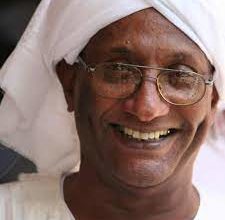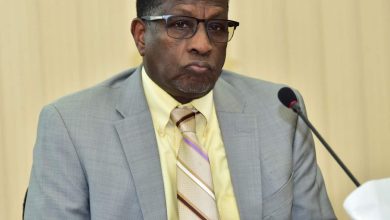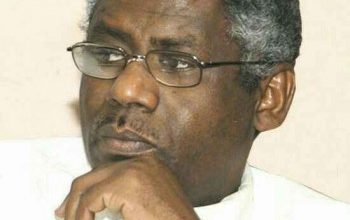From Where has he come, this Hemedti? (1-2)

Abdallah Ali Ibrahim
Sudanese novelist, Tayeb Salih, was once quoted as saying “from where have these people come?” when he was struck by the series of human rights violation committed by the salvation regime during its rule of Sudan, 1989. The phrase then stuck with the regime as a curse, hasn’t it came from one of the custodian of the Sudanese spirituality.
And many people are chocked today in face of the war led by the Rapid Support Force and its cruelty, to ask the same question “from where have these people come?”. However, the question about the entity of the RSF has been repeatedly asked. The question emerged vis-à-vis the violations committed by the Janjaweed, the prototype of the Rapid Support forces, given the killings carried out in Darfur during the first decade of this century. And people took different stands in responding to the question, each guided by the preconditions of time and interest. Those opposing the salvation regime, saw in it once a pawn of the regime to establish and Arab-Islamic security regime that would vacate Darfur from African group (zurga in the local jargon). It is the view of the academic and leader within the Justice and Equality armed Movement, Abdalla Osman Al tom, the Janjaweed are an attempt to totally eradicate the indigenous people of Darfur (Africans) and to strip them from their lands, spurred by Arab supremacist ideology. But the supporters of the regime have seen nothing wrong in the Janjaweed so long as they fought the armed Darfuri movements who seek to bring down the Ignaz (salvation) rule.
That was during the previous first round. As to the current round , the supporters of the dissolved Ignaz have seen in the RSF mere mercenaries hailing from the African Sahel, and seeking to undermine the Sudanese entity. But the historical opponent of the salvation, who had in the past lashed at the jandweed calling them mercenaries in the service of the salvation as we have seen, now they view them as Sudanese who merit to express their view and take stands no matter what our opinion about them.
In the view of the historian who wrote about the Sudan, Douglas Johnson, what mars writings about the Sudan is that they focus on the policies of the central state, turning a blind eye to the regions and their local policies. These writing hold president Jafar Nimeiri (1969-1985) the brunt of breaching the Addis Ababa Agreement, concluded with the southern Sudanese nationalist in 1972, within one decade after it was signed. But those writings do not take into considerations the south-south differences which were hugely behind spurring this breach. If the regions complain of marginalization, the inept writings about the center on the matter increases this marginalization, thus rendering the regions in yet double marginalization status.
Thus it becomes clear within the circles of the elite that the reply to this question of “from where have these people come?”, be it meant for the Janjaweed or the RSF would be that they are a group of mercenaries, used mostly by the central government to help remove the ordure of the opposition off the paved path. There is no consideration for the regional and local policies out of which this phenomenon was borne.
The journalist and filmmaker Julie Flint has earlier warned in her book “The Other War: Inter-Arab Wars in Darfur” (2010) that the way to understand such phenomena as the Janjaweed might lead us to grasp local policies before they fall into the traps of the central state, as people tend to understand them. The most important thing that came out in her book is that the Arabs who committed crimes against the Africans of Darfur in the service of the “salvation” regime until they were accused of “ethnic cleansing”, were in the meantime fighting each other long, fiercely and bloody, so Flint returned in her book to the drought and desertification that hit North Darfur as part of the African coast during the seventies and eighties. She mentioned how these successive droughts first destabilized the Arab Abala (camel herders) in Northern Darfur from tribes attributed to the Rizeigat people, many of whom were nonetheless cowherds (Baqara) in Southern Darfur. The northern Badia in Darfur has been devastated and their home is no longer livable. And these camel raisers moved to seek sustenance somewhere else in the territories and in so doing they committed injustice. But when their livelihoods were blocked, they wanted to relieve their plight by their traditional seasonal migration southward to nurture their herds as they used to do in the Fur farms, from Zurqa and Darfur itself, until they reached South Darfur, the home of their own likes, the Baggara.
They were denied that alternative livelihood for two reasons. The first reason was the increase in population and the herds an increase that inflamed the conflict over the limited resources in their destinations. Another reason was to prevent them from grazing the farmers after harvesting. These corrals are what the Fur and Baggara are erecting so as to protect their gardens and their herds that have found innovative marketing in Khartoum and the Gulf.
When these “camel raisers” became fed up with their pastoral economy, they turned to acquisition of heavy weapons and militarization to protect that economy no matter what were its shortcomings. This militarization will be the mainstay of their livelihood when the central government goes out to recruit its forces, such as border guards and popular defense forces, to fight the armed opposition movements. In this effort, they clashed with groups of their own people in South Darfur in battles that claimed casualties.
To be continued


